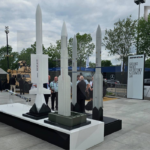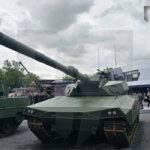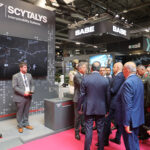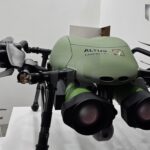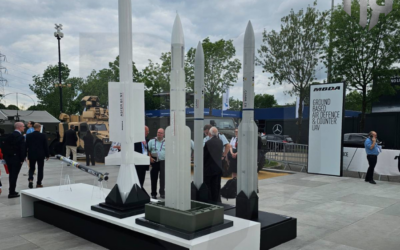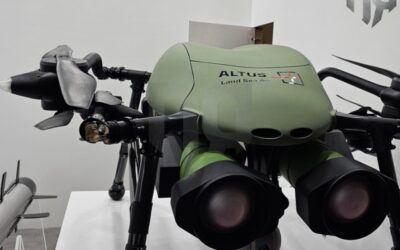With such a large number of interested attendees at MBDA’s pavilion at the Eurosatory 2024 Defence exhibition, the stand reminded of an…
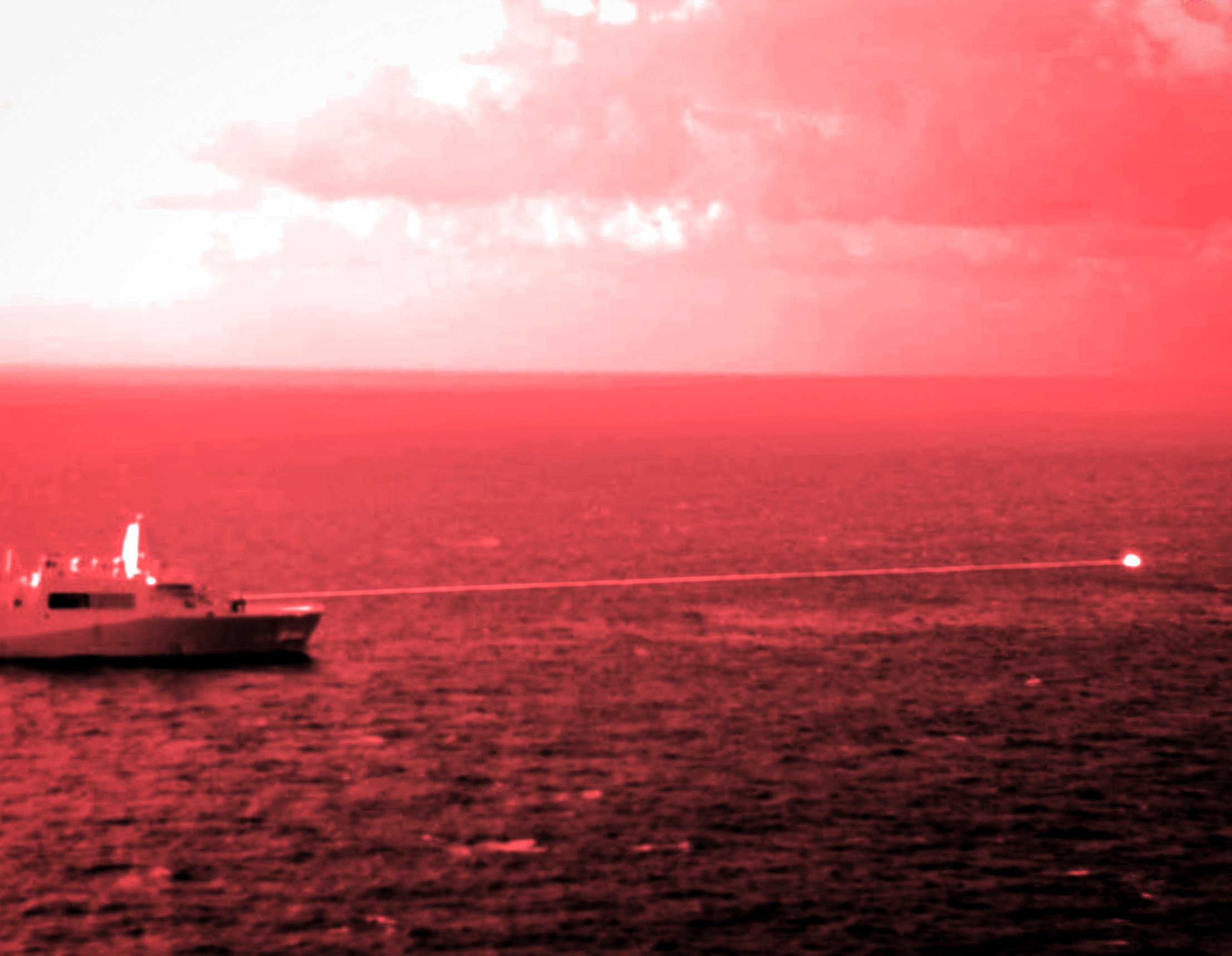
The US Navy plans to mount a high-powered microwave (HPM) prototype system on one of its combat vessels in 2026.
The system will come from the US Navy’s Project METEOR, which is developing a directed energy weapon system prototype that the service plans to integrate on warships in 2026.
The METEOR will provide firing capability with low cost-per-shot, tactically significant range, short time engagement for multi-target approach, dual deception (decoys), and defeat capability.

The U.S. Navy is developing high-powered microwave technology in a new program called Project METEOR. https://t.co/M3gRjQdpLR
— National Interest (@TheNatlInterest) April 3, 2024
This system will be the US Navy’s first high-powered microwave, a type of directed energy weapon system that the Army, Navy, and Air Force are exploring to counter cheap unmanned aerial systems.
Unlike other directed energy systems the Navy uses, the METEOR prototype will use a different kill mechanism to disable targets. Instead of a focused beam of light, HPM systems use microwave energy to inflict damage to electronics inside targets.
The US Navy believes that this mechanism will be useful in defeating Anti-Ship Ballistic Missiles (ASBM) like the ones fielded by China’s People’s Liberation Army Rocket Force.
Also read: BAE Systems | Delivery of next-generation digital IFF systems for the US Navy
The US Navy has a similarly-named, yet separately-funded, HPM project also called “METEOR” that is focused on accelerating technology development to address this ASBM issue in the Pacific.
HPM systems will also have utility in other operational theatres, like the Red Sea and the Indian Ocean, where Houthis have fired hundreds of unmanned aerial systems and anti-ship cruise missiles at ships to disrupt global trade.
Next year, the US Navy will conduct a series of functionality tests on various subsystems matured under past programs before integrating them into what it refers to as the High Power Microwave Test Bed.
During this period, the Navy will also start implementing design changes to the prototype hardware to prepare it for ship integration. This will include electromagnetic interference measurements, which are carried out to find a suitable topside location (like on the top of the vessel’s mast) where the system won’t negatively interfere with the ship’s sensors or other systems.
Following the completion of these tests, the US Navy will begin open-air testing of the prototype system against surrogate targets at the Point Mugu Sea Range.
Also read: Epirus | Leonidas C-UAS system showcased at AUSA 2023
*Photo: US Navy
READ MORE
KNDS | Showcases full range of LEOPARD battle tanks at EUROSATORY
KNDS continues to expand its technological advantage in the field of main battle tank development, as we have witnessed at the Defence and…
THEON SENSORS | Distinguishing appearance at EUROSATORY 2024 with new range of products
THEON SENSORS attended the International Defence and Security Exhibition EUROSATORY 2024 as an ambassador of Greek innovation…
EUROSATORY 2024 | Missile Artillery Solutions from MBDA
With such a large number of interested attendees at MBDA’s pavilion at the Eurosatory 2024 Defence exhibition, the stand reminded of an…
KNDS | Showcases full range of LEOPARD battle tanks at EUROSATORY
KNDS continues to expand its technological advantage in the field of main battle tank development, as we have witnessed at the Defence and…
THEON SENSORS | Distinguishing appearance at EUROSATORY 2024 with new range of products
THEON SENSORS attended the International Defence and Security Exhibition EUROSATORY 2024 as an ambassador of Greek innovation…
Ministry of Defence | Organization of Hellenic EDF Info Day
A Conference entitled “EDF Info Day” is organized in the Amphitheater of the National Gallery on Tuesday, July 9 from 09:00 to 17:00.
ALTUS LSA | Participates in EUROSATORY 2024 with KERVEROS in the foreground
The participation of ALTUS LSA in EUROSATORY 2024 is among the Greek participations of operational significance.
Freddy Beleris | Ιn jail until October
The elected mayor of Heimarra and Member of the European Parliament of New Democracy will remain in prison until October…







